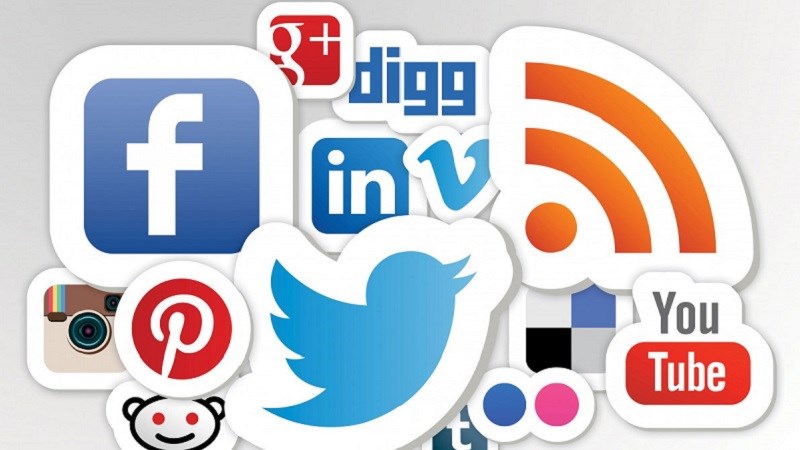Social media was once enjoyable. Users could connect, interact and learn about the outside world. Big Tech corporations have mutated their platforms to cause addictions, guide users to chosen content and shove sneaky advertisements under their noses. Can we unite against our toxic platforms to make social media fun again?


Happy young woman using her phone to interact with social media, getting followers, likes, emoji feedback © progressman / shutterstock.com
Once upon a time, Instagram was fun.
When I first joined the platform in 2012 (at the questionable age of 13), Instagram was a far cry from what it is today. There was no sleek white interface, and nothing on the site was that sad shade of beige. The app had no video-sharing capability. The term “influencer” hadn’t entered the mainstream cultural lexicon. Only the savviest of marketers were discussing the promotion of “user-generated content.” Instagrammers weren’t shilling tummy-slimming tea, hair products or Stanley Cups.
Instagram was a place where ordinary non-celebrities flocked to retrofit their personal photos with filters and special effects. Unaltered by recommendation algorithms, users’ timelines chronologically displayed posts made by their friends and families. There were grainy black-and-white photos of dogs, sepia snapshots taken at breakfast tables and blurry images featuring neighborhood flowers. The Instagram of yore was a place to see and be seen through an artistic (though now admittedly cringeworthy) lens. The site was creative and social. Sadly, that was about to change.
The degradation of social media
In 2013, Instagram introduced video sharing and a new model for advertisement. Users’ feeds were now populated by ads disguised as regular posts, save for their small “sponsored” tags. Advertisers gained access to user data and advanced analytics tools.
The advertising model as proposed back then has since further evolved. Today’s Instagram advertisements appear as carousel posts, influencer partnerships, shoppable photos and story slides. Advertising content is highly personalized and seamlessly integrated. The influencer era has demolished the amateur and authentic look of earlier Instagram.
Modern users post only their most polished content, causing their followers to feel inadequate. Instagram is now a comparison machine and an ideological echo chamber. Now that content is evaluated by metrics of engagement, users are only shown subject matter likely to hold their attention. Often the most captivating pieces of content are those that are sensationalist or polarizing. The platform’s endless scroll feature promotes compulsive use.
When I deleted my Instagram account a decade after creating it, the platform barely resembled the social media site I joined. The other major social media platforms — Facebook, Twitter, Snapchat, YouTube, etc. — have undergone similar changes. Researchers and media outlets are beginning to examine the adverse effects social media can have on mental health, particularly for young people, as well as the erosion of the public’s ability to engage in civil discourse.
I support the concept of social media as it was originally conceived. I grew up in a culturally isolated small town in the southwestern United States: Sand Springs, Oklahoma. As a little girl, I was hungry for information, desperate for knowledge about what the rest of the world might be like. Social media cracked my village wide open and gave me a glimpse of the global stage. It was a cool way to interact with the people I already knew and gain insights into topics I had never considered. Social media was fun. Now, it’s gone too far.
What was once a tool for a unique form of social engagement became an addictive force with unintended consequences for my life. I spent hours gazing into the black mirror of my cell phone, aware of the passage of finite time yet compelled to continually scroll for more vapid content. I lost my privacy, my self-confidence and the sense that I was in control of my life. I decided enough was enough; to regain these precious things, I deleted my social media accounts. I’ll only rejoin the major platforms if they undergo significant changes that make them fun again.
Crafting ideal, fun social media
On my fantasized social media sites, users have control over their data. These hypothetical platforms are built upon a Decentralized Social Networking Protocol (DSNP), which establishes a shared social graph independent of a centralized platform. They prioritize privacy, security and user autonomy. Traditional social media platforms require users to relinquish control of their data the moment they accept the platform’s terms and conditions. (When I deleted my Instagram account, I lost the records of all of the content I created and interactions I had with other users and third-party platforms over those ten years. Much of this data is still retained in a Meta Platforms data center, but I have no access to my own information.) A DSNP-based platform would allow me to move my data from platform to platform. I wouldn’t have to sacrifice my information or lose my social connections or content. My data would be encrypted and I could interact more directly with fellow users of the platform without so much outside interference.
Social media as facilitated by Big Tech corporations relies on the use of mysterious algorithms. Everyday users are largely unaware of how these systems function. In a healthier social media experience, users can peek behind the curtain to discover how content is curated, ranked and presented to them. Users can then make informed decisions about the kinds of content they engage with and have greater control over what they see.
Recommendation algorithms create social media feeds that are largely homogenous. Contrary to popular belief, I don’t want to see the same kind of content on repeat. Less reliance on recommendation algorithms would allow social media users to design their own feeds, rather than view that which the platform has decided for them.
The ideal social media platform is not designed to be addictive. There is no endless scroll feature; users eventually reach the end of the line. That’s because the goal of fun social media is not to capitalize on human weakness and maximize users’ eyeball time to drive advertising profit. Rather, it is to inspire, inform and connect users. Social media could be great if platforms were honest.
We must reject destructive social media
In the US, all nicotine products are sealed with a warning label. Social networking sites should adhere to a similar requirement. US Surgeon General Vivek Murthy has reached the same conclusion. Consumers have a right to know that excessive social media use may lead to depression, anxiety, loneliness, low self-esteem, cyberbullying, harassment, addiction, exposure to misinformation, distorted perceptions of reality, polarization, body image issues, disordered eating behaviors, exploitation or extortion, privacy breaches, insomnia and strained real-life relationships. Consumers also have a right to access information about coping with these risks.
There are wonderful individuals doing wonderful work to promote Big Tech accountability and legislative reform. But it will take more than those efforts to change the social media landscape. Historically, legislative action lags behind technological progress. Without legislative motivation, Big Tech corporations currently face little pressure to positively transform their services.
Why would they change? Consumers are consenting to use platforms as they are, despite their dissatisfaction. The current major social media models are hugely profitable. If you were Mark Zuckerberg, Jeff Besos or Elon Musk, would you make drastic changes to your existing product to the tune of billions of dollars in lost revenue?
Social media could be fun again. But for that to happen, everyday social media users must be brave enough to reject the existing systems and embrace something new.





